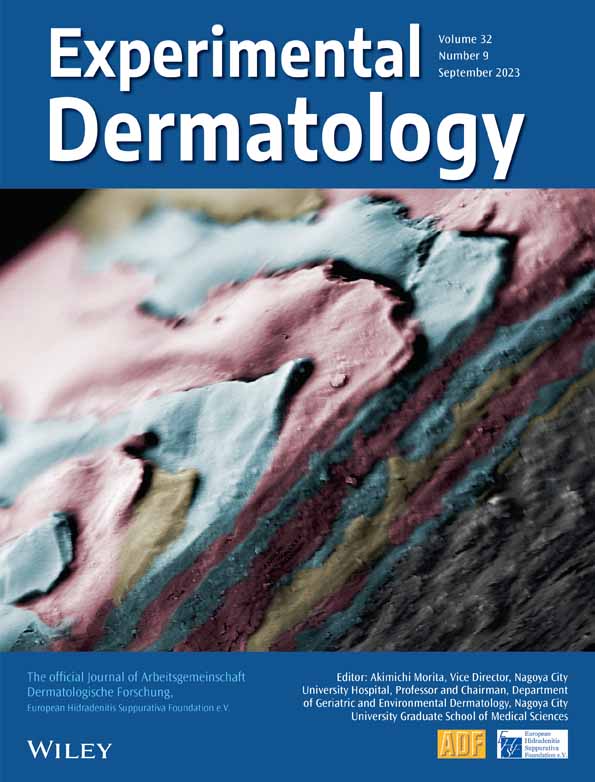Transcriptional analysis reveals distinct gene expression profiles of three bowenoid papulosis patients
Yi Tang and Xiaoxia Zhu these authors contributed equally to this work.
Abstract
Bowenoid papulosis (BP) is a benign and possibly carcinogenic disease associated with human papillomavirus (HPV) infection, which has been increasingly recognised and paid attention to in recent years, but the potential mechanisms still remain unclear. In our study, three patients who were diagnosed with BP were enrolled into our research. Skin biopsies were taken and were separated into two parts, one part was for HE staining and the others were for RNA-sequencing (RNA-seq). All the three patents were human papillomavirus (HPV) positive and HE staining revealed typical skin histopathological changes in BP, including dyskeratosis, hyperplasia and hypertrophy of the granular and spinous layers, atypical keratinocytes. RNA-seq analysis demonstrated that a total of 486 differentially expressed genes (DEGs) were detected between the skin tissues from BP and the controls, among which, 320 genes were significantly upregulated and 166 genes were dramatically downregulated. GO enrichment revealed that antigen binding, cell cycle, immune response and keratinisation to be the most notably altered pathways, whereas KEGG analysis indicated that cell cycle cytokine-cytokine receptor interaction, ECM receptor interaction and p53 signalling pathway to be the most significantly changed signalling pathways in BP. Furthermore, metabolism-associated enrichment analysis showed that cholesterol metabolism, metabolism of xenobiotics by cytochrome p450 and pyrimidine metabolism to be the most dramatically dysregulated metabolic pathways in BP as compared to normal controls. Our study revealed that inflammation, metabolism and cell proliferation signalling pathways might be the most important pathways for BP disease, targeted inhibiting of these signals might be a potential method for BP treatment.
CONFLICT OF INTEREST STATEMENT
All of the authors declare that there are no conflicts of interest. We have not accepted from a sponsor, pharmaceutical company or other organisation and have not potential conflicts of interest, where present, been disclosed to the study participants. We have full access to all data and the corresponding author take full responsibility for its accuracy.
Open Research
DATA AVAILABILITY STATEMENT
The data that support the findings of this study are available from the corresponding author upon reasonable request.




